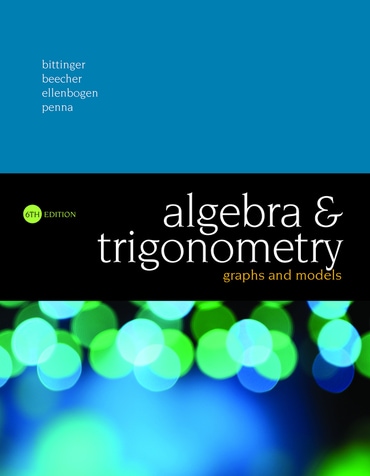Switch content of the page by the Role togglethe content would be changed according to the role
Algebra and Trigonometry: Graphs and Models, 6th edition
Published by Pearson (January 14, 2016) © 2017
- Marvin L. Bittinger Indiana University Purdue University Indianapolis
- Judith A. Beecher Indiana University Purdue University Indianapolis
- David J. Ellenbogen Community College of Vermont
- Judith A. Penna Indiana University Purdue University Indianapolis
eTextbook
per month
from$149.32
MyLab
from$79.99
Need help? Get in touch

Digital Learning NOW
Extend your professional development and meet your students where they are with free weekly Digital Learning NOW webinars. Attend live, watch on-demand, or listen at your leisure to expand your teaching strategies. Earn digital professional development badges for attending a live session.

